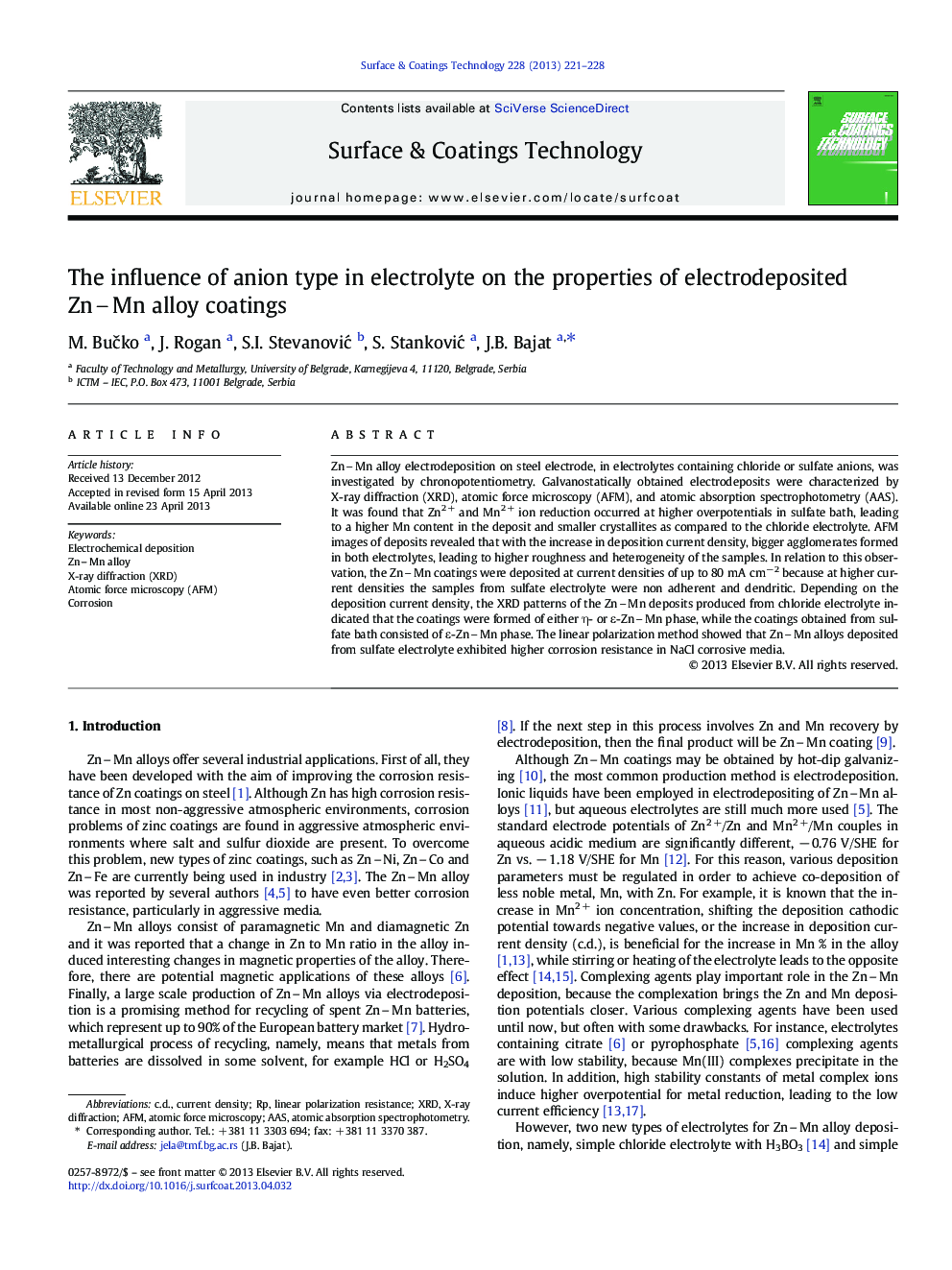| Article ID | Journal | Published Year | Pages | File Type |
|---|---|---|---|---|
| 8029926 | Surface and Coatings Technology | 2013 | 8 Pages |
Abstract
ZnMn alloy electrodeposition on steel electrode, in electrolytes containing chloride or sulfate anions, was investigated by chronopotentiometry. Galvanostatically obtained electrodeposits were characterized by X-ray diffraction (XRD), atomic force microscopy (AFM), and atomic absorption spectrophotometry (AAS). It was found that Zn2 + and Mn2 + ion reduction occurred at higher overpotentials in sulfate bath, leading to a higher Mn content in the deposit and smaller crystallites as compared to the chloride electrolyte. AFM images of deposits revealed that with the increase in deposition current density, bigger agglomerates formed in both electrolytes, leading to higher roughness and heterogeneity of the samples. In relation to this observation, the ZnMn coatings were deposited at current densities of up to 80 mA cmâ 2 because at higher current densities the samples from sulfate electrolyte were non adherent and dendritic. Depending on the deposition current density, the XRD patterns of the ZnMn deposits produced from chloride electrolyte indicated that the coatings were formed of either η- or ε-ZnMn phase, while the coatings obtained from sulfate bath consisted of ε-ZnMn phase. The linear polarization method showed that ZnMn alloys deposited from sulfate electrolyte exhibited higher corrosion resistance in NaCl corrosive media.
Keywords
Related Topics
Physical Sciences and Engineering
Materials Science
Nanotechnology
Authors
M. BuÄko, J. Rogan, S.I. StevanoviÄ, S. StankoviÄ, J.B. Bajat,
